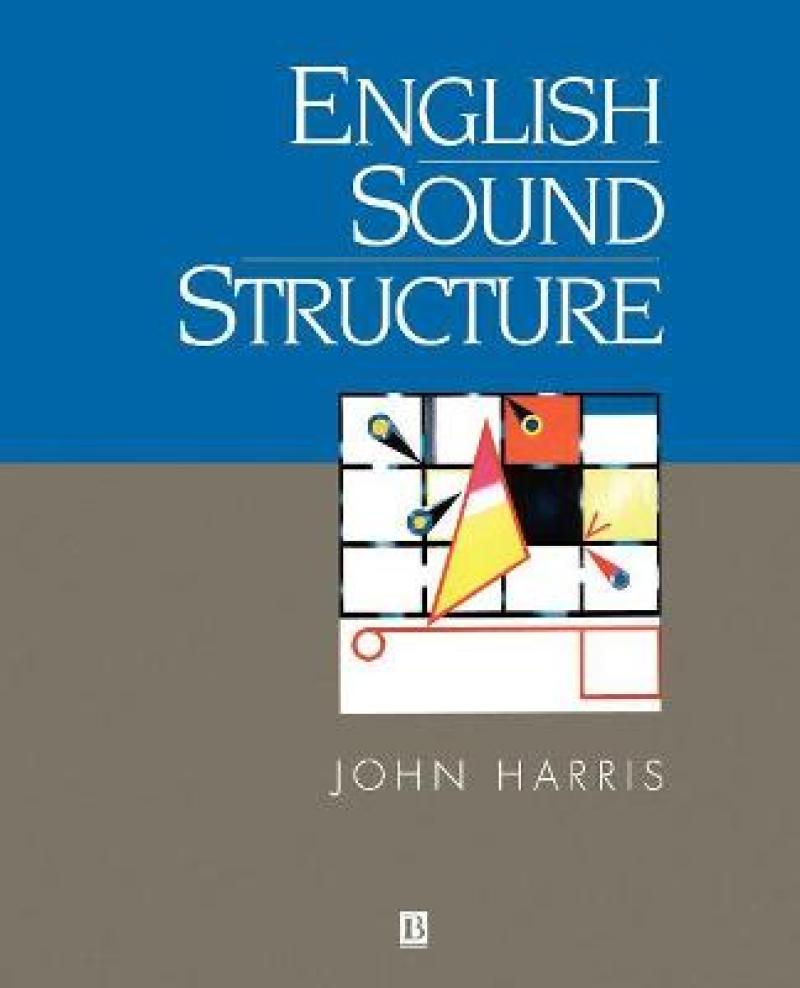"Harris's book is a clear introduction to current phonological views, using material drawn entirely from English, which helps a good deal to make the issues alive for the beginning student. Unlike most current texts, Harris takes the issue of syllable structure very seriously, and integrates the effects of syllable-position early on in his presentation; this is an especially good choice on his part." <i>John Goldsmith, University of Chicago</i> <p>"John Harris's <i>English Sound Structure</i> presents novel analyses of familiar processes such as flapping, tapping, and intrusive r within a restricted theory of phonological representation in which the notions of prosodic licensing, government, and segmental complexity bear the major explanatory burden. It is a book that merits serious consideration by all phonologists." <i>Michael Kenstowicz, MIT</i></p> <p>"I think this book is an excellent textbook, and since it is entirely based on English, this makes it easily accessible to linguistics students with English as a mother tongue, and to students of English in other parts of the world who are interested in more theoretical aspects of linguistics." <i>Glot International</i></p> <p>"This is an excellent book. It is well written and thought-provoking. The end of chapter exercises are challenging, but by no means daunting. Students and linguists who work through the book will gain a real understanding, not only of English phonology but also of important issues in phonological theory." <i>Times Higher Education Supplement</i></p>
1. Sounds and Words.
1.1. Phonology in Generative Grammar.
1.2. Phonological Phenomena.
1.3. Representation and Derivation.
1.4. Words and Roots.
Exercises.
2. Constituency.
2.1. Non-Linear Phonological Representations.
2.2. Timing.
2.3. Phonological Constituent Structure.
2.4. Onsets, Rhymes, Nuclei.
2.5. Syllabification.
Summary.
Exercises.
3. Melody.
3.1. Introduction.
3.2. The Primes of Melodic Representation.
3.3. Elements for Vowels.
3.4. Elements for Consonants.
3.5. Melodic Geometry.
3.6. Laryngeal Elements.
3.7. Conclusion.
3.8. Appendix: Specification of Elements.
4. Licensing.
4.1. Introduction.
4.2. The Phonological Hierarchy.
4.3. Phonological Licensing.
4.4. Licensing and Melodic Complexity. 4.5. Principles and Parameters of Phonological Structure.
4.6. Empty Positions.
4.7. Lenition.
4.8. Summary.
Exercises.
5. Floating Sounds.
5.1.Introduction.
5.2. English r-systems.
5.3. A Linear Analysis of Smooth r.
5.4. A Coda Analysis.
5.5. Floating r.
5.6. Historical Interlude.
5.7. Vowels before r.
5.8. Conclusion.
Exercises.
Epilogue.
Notes.
References.
Subject Index.
Index of Vowel Word-Classes.
The book is virtually unique among theoretical treatments of English phonology in drawing on material from a wide range of dialects. This orientation derives from the view that phonological differences between grammars, no less than syntactic differences, are constrained by universal principles and occur within fixed bounds defined by a small number of parameters. Against this background, this book analyses a wide range of variables in English which offer revealing insights into the limits of phonological variation. The reader is introduced to recent innovations in non-linear theory, particularly those concerning the internal composition of segments and their organization in constituent structure. Phenomena discussed include vowel length, syllabic structure, stress, consonantal weakening and vowel reduction and syncope.
